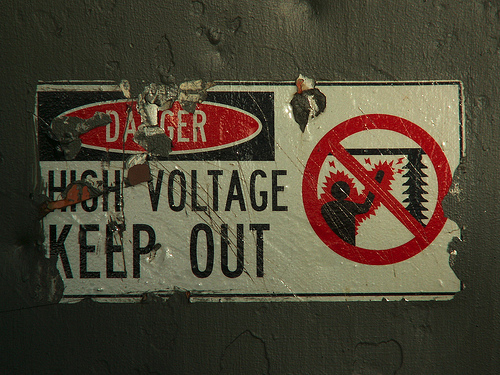We're blind without 4G backbone: Ausgrid

Energy utilities' networks are effectively flying blind until a 4G backbone network can be established for them, according to Ausgrid managing director George Maltabarow.

(The Danger Door image by
Timothy Allen, CC BY-SA 2.0 )
Speaking at IQPC's 3rd National Smart Grids Forum held in Sydney today, Maltabarow said that electricity networks had to take a reactive approach to solving issues because of a lack communication devices built into the network.
"People actually don't understand the extent to which we're actually quite blind — it's not just us, but all networks. We're quite blind. It takes someone to ring in to tell us that they don't have power. Somebody else rings in and the controller tries to join the dots and figure out where the problem is," he said.
Ausgrid is now deploying a 4G backbone network with Ericsson to address the issue. Maltabarow stated that the network will allow the utility to take a more proactive approach to solving problems.
"Once you deploy this 4G radio network, you will instantaneously know what is happening on the network, what the voltage levels are, what the utilisation levels is and whether there are any problems."
The utility has already connected its 240 major substations together with fibre and is aiming to connect its 30,000 transformers, more commonly recognised as green boxes in suburban streets, to the fibre. About 12,000 green boxes will be connected via the 4G communications network and enable the utility to better understand network loads.
Maltabarow expects one source of loads to be the growing number of electric vehicles (EVs) operating on the roads. Ausgrid has bought 20 Mitsubishi i MiEV vehicles to test so that it can form an understanding of how they will impact the electricity network. Although adoption of the vehicles has been hindered by high prices, they do have the potential to increase peak demands for electricity if everyone attempts to charge them at the same time.
Although Maltabarow wasn't convinced of the green credentials of electric cars, which he said were driven by a carbon intensive grid anyway, president and CEO of Digital Energy at GE Digital Energy, Bob Gilligan, said that if they were adopted in greater numbers, EVs could be used as a dynamic form of energy storage.
"There are ideas out there that with the advent of the electric car in some way, the battery storage within the vehicle could become a storage media for delivering power to the home in periods of peak demand," he said. However, he admitted that it would take a while before that would be feasible.
"I don't see that as being a near-term solution. I would believe that battery technology would get more mature faster with the advent of EVs, and hopefully sometime 20 years down the road it could be a more economic proposition."